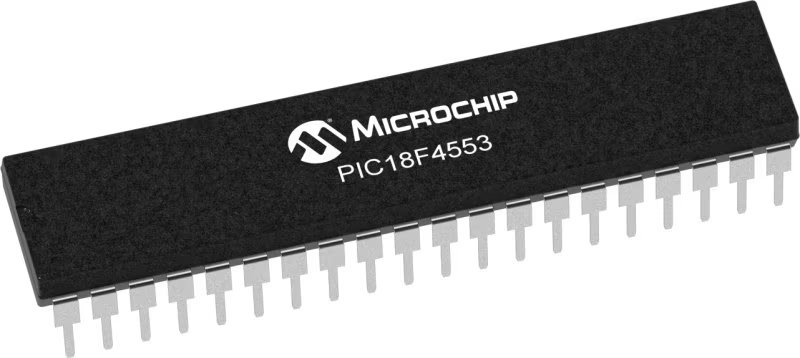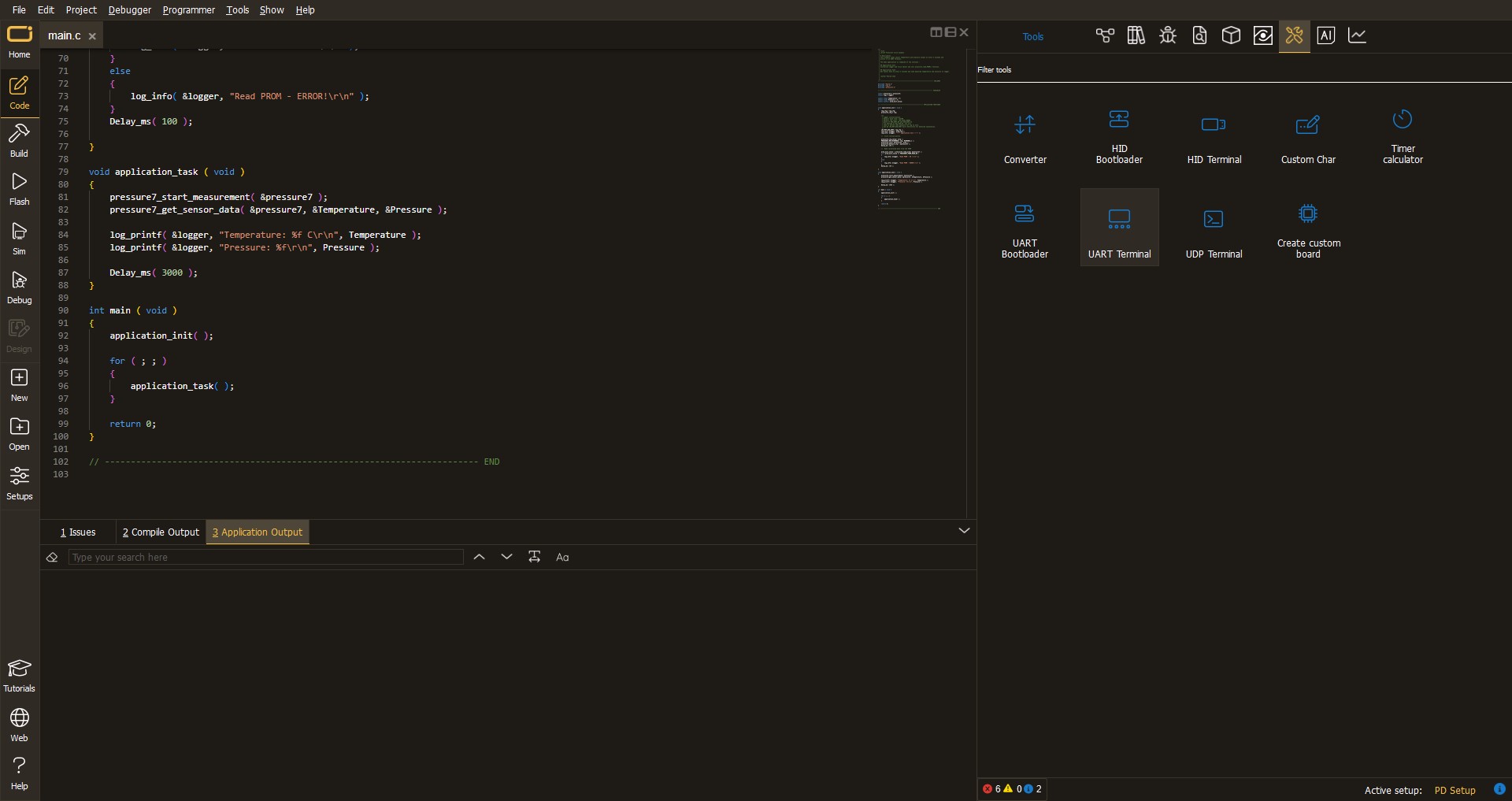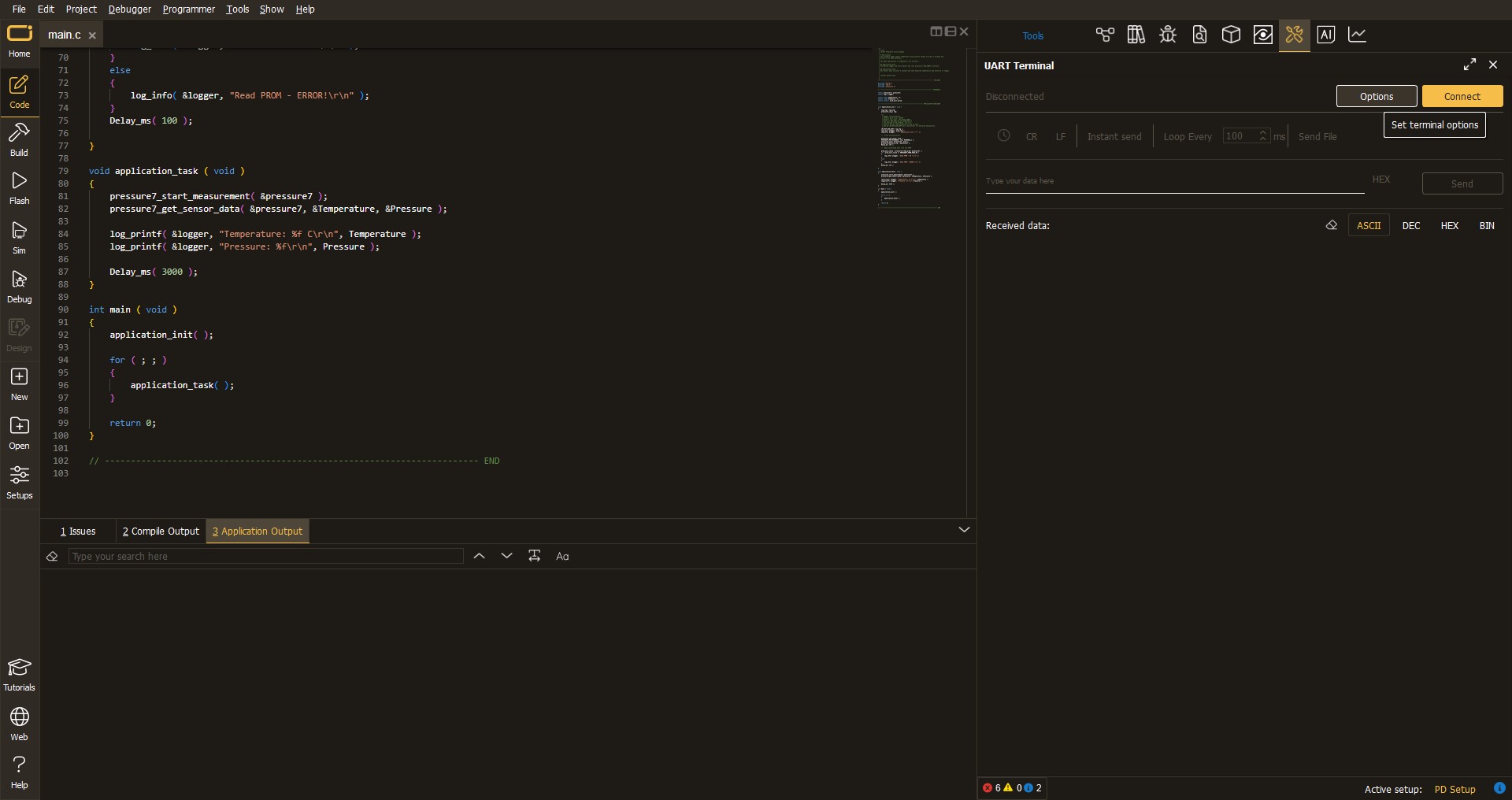Upgrade your power management and take your engineering game to the next level with a boost converter
A
A
Hardware Overview
How does it work?
Boost 8 Click is based on the LT1945, a dual micropower DC/DC converter from Analog Devices that boosts an input voltage to a higher level required by an output load. The LT1945 uses a constant off-time control scheme to provide high efficiency over a wide range of output currents. Each converter inside the LT1945 is designed with a 350mA current limit generating well-regulated positive and negative outputs of ±12V or ±24V, making the LT1945 ideal for various applications. It also contains additional circuitry to provide protection during the Start-Up sequence and under short-circuit conditions, reducing the average inductor output current and minimizing the
power dissipation in the power switch.As mentioned, the LT1945 can configure the positive and negative output voltage in the ±12V or ±24V range. The desired output voltage can be selected by positioning SMD jumpers labeled +VOUT SEL and -VOUT SEL to an appropriate position. It is also possible to control the activity of the output channels via two mikroBUS™ pins, EN+ and EN- pins routed to the RST and PWM pin of the mikroBUS™ socket. By setting these pins to a high logic state, the converter outputs are set to an active state, and regulated voltages are available at the output terminals. In the same way, setting these pins to a low logic level disables the channels.
This Click board™ can only be operated from a 3.3V logic voltage level. Therefore, the board must perform appropriate logic voltage level conversion before using MCUs with different logic levels. Additionally, there is a possibility for the LT1945 power supply selection via jumper labeled as VIN SEL to supply the LT1945 from an external power supply terminal in the range from 2.7V to 5V or with 3.3V from mikroBUS™ power rail. However, the Click board™ comes equipped with a library containing easy-to-use functions and an example code that can be used, as a reference, for further development.
Features overview
Development board
EasyPIC v7 is the seventh generation of PIC development boards specially designed to develop embedded applications rapidly. It supports a wide range of 8-bit PIC microcontrollers from Microchip and has a broad set of unique functions, such as a powerful onboard mikroProg programmer and In-Circuit debugger over USB-B. The development board is well organized and designed so that the end-user has all the necessary elements in one place, such as switches, buttons, indicators, connectors, and others. With four different connectors for each port, EasyPIC v7 allows you to connect accessory boards, sensors, and custom electronics more efficiently than ever. Each part of
the EasyPIC v7 development board contains the components necessary for the most efficient operation of the same board. An integrated mikroProg, a fast USB 2.0 programmer with mikroICD hardware In-Circuit Debugger, offers many valuable programming/debugging options and seamless integration with the Mikroe software environment. Besides it also includes a clean and regulated power supply block for the development board. It can use various external power sources, including an external 12V power supply, 7-23V AC or 9-32V DC via DC connector/screw terminals, and a power source via the USB Type-B (USB-B) connector. Communication options such as
USB-UART and RS-232 are also included, alongside the well-established mikroBUS™ standard, three display options (7-segment, graphical, and character-based LCD), and several different DIP sockets. These sockets cover a wide range of 8-bit PIC MCUs, from PIC10F, PIC12F, PIC16F, PIC16Enh, PIC18F, PIC18FJ, and PIC18FK families. EasyPIC v7 is an integral part of the Mikroe ecosystem for rapid development. Natively supported by Mikroe software tools, it covers many aspects of prototyping and development thanks to a considerable number of different Click boards™ (over a thousand boards), the number of which is growing every day.
Microcontroller Overview
MCU Card / MCU

Architecture
PIC
MCU Memory (KB)
32
Silicon Vendor
Microchip
Pin count
40
RAM (Bytes)
2048
Used MCU Pins
mikroBUS™ mapper
Take a closer look
Schematic

Step by step
Project assembly
Track your results in real time
Application Output
After pressing the "FLASH" button on the left-side panel, it is necessary to open the UART terminal to display the achieved results. By clicking on the Tools icon in the right-hand panel, multiple different functions are displayed, among which is the UART Terminal. Click on the offered "UART Terminal" icon.

Once the UART terminal is opened, the window takes on a new form. At the top of the tab are two buttons, one for adjusting the parameters of the UART terminal and the other for connecting the UART terminal. The tab's lower part is reserved for displaying the achieved results. Before connecting, the terminal has a Disconnected status, indicating that the terminal is not yet active. Before connecting, it is necessary to check the set parameters of the UART terminal. Click on the "OPTIONS" button.

In the newly opened UART Terminal Options field, we check if the terminal settings are correct, such as the set port and the Baud rate of UART communication. If the data is not displayed properly, it is possible that the Baud rate value is not set correctly and needs to be adjusted to 115200. If all the parameters are set correctly, click on "CONFIGURE".

The next step is to click on the "CONNECT" button, after which the terminal status changes from Disconnected to Connected in green, and the data is displayed in the Received data field.

Software Support
Library Description
This library contains API for Boost 8 Click driver.
Key functions:
boost8_enable_positive_voltageEnable positive voltage output function.boost8_disable_positive_voltageDisable positive voltage output function.boost8_enable_negative_voltageEnable negative voltage output function.
Open Source
Code example
This example can be found in NECTO Studio. Feel free to download the code, or you can copy the code below.
/*!
* @file main.c
* @brief Boost 8 Click Example.
*
* # Description
* This is an example that demonstrates the use of the Boost 8 Click board.
*
* The demo application is composed of two sections :
*
* ## Application Init
* Initializes EN+ and EN- pins, UART log, and performs default configuration.
*
* ## Application Task
* Waits for user input in order to determine what output should be enabled.
*
* @author Stefan Ilic
*
*/
#include "board.h"
#include "log.h"
#include "boost8.h"
static boost8_t boost8; /**< Boost 8 Click driver object. */
static log_t logger; /**< Logger object. */
/**
* @brief Boost 8 log list of commands.
* @details This function is used for logging a list of available commands used in this example.
*/
void boost8_list_of_commands( void );
void application_init ( void )
{
log_cfg_t log_cfg; /**< Logger config object. */
boost8_cfg_t boost8_cfg; /**< Click config object. */
/**
* Logger initialization.
* Default baud rate: 115200
* Default log level: LOG_LEVEL_DEBUG
* @note If USB_UART_RX and USB_UART_TX
* are defined as HAL_PIN_NC, you will
* need to define them manually for log to work.
* See @b LOG_MAP_USB_UART macro definition for detailed explanation.
*/
LOG_MAP_USB_UART( log_cfg );
log_init( &logger, &log_cfg );
log_info( &logger, " Application Init " );
// Click initialization.
boost8_cfg_setup( &boost8_cfg );
BOOST8_MAP_MIKROBUS( boost8_cfg, MIKROBUS_1 );
if ( DIGITAL_OUT_UNSUPPORTED_PIN == boost8_init( &boost8, &boost8_cfg ) )
{
log_error( &logger, " Communication init." );
for ( ; ; );
}
boost8_default_cfg ( &boost8 );
log_info( &logger, " Application Task " );
boost8_list_of_commands();
}
void application_task ( void )
{
char inx;
// Waiting for the user input and performing actions based on a selected command.
if ( log_read( &logger, &inx, 1 ) != BOOST8_ERROR )
{
switch(inx)
{
case '1' :
{
log_printf( &logger, "Turning on positive output \r\n" );
boost8_enable_positive_voltage( &boost8 );
break;
}
case '2' :
{
log_printf( &logger, "Turning off positive output \r\n" );
boost8_disable_positive_voltage( &boost8 );
break;
}
case '3' :
{
log_printf( &logger, "Turning on negative output \r\n" );
boost8_enable_negative_voltage( &boost8 );
break;
}
case '4':
{
log_printf( &logger, "Turning off negative output \r\n" );
boost8_disable_negative_voltage( &boost8 );
break;
}
case '5' :
{
log_printf( &logger, "Turning on both outputs \r\n" );
boost8_enable_both_outputs( &boost8 );
break;
}
case '6' :
{
log_printf( &logger, "Turning off both outputs \r\n" );
boost8_disable_both_outputs( &boost8 );
break;
}
default:
{
log_printf( &logger, "> Invalid command \r\n" );
boost8_list_of_commands();
break;
}
}
}
}
void main ( void )
{
application_init( );
for ( ; ; )
{
application_task( );
}
}
void boost8_list_of_commands( void )
{
log_printf( &logger, "> List of valid commands: \r\n" );
log_printf( &logger, "1 - Turn on positive output \r\n" );
log_printf( &logger, "2 - Turn off positive output \r\n" );
log_printf( &logger, "3 - Turn on negative output \r\n" );
log_printf( &logger, "4 - Turn off negative output \r\n" );
log_printf( &logger, "5 - Turn on both outputs \r\n" );
log_printf( &logger, "6 - Turn off both outputs \r\n" );
log_printf( &logger, "Enter command from provided list: \r\n" );
}
// ------------------------------------------------------------------------ END


































